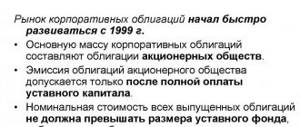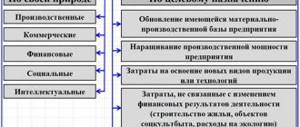A novice investor always faces serious risks. Even knowing all the strategies and financial instruments may not be enough to achieve success in the complex field of investing. A beginner needs personal experience. To get it without losing money, novice investors use portfolio investments. This type of investment allows you to significantly secure your deposits, so it is used not only by beginners, but also by experienced investors who simply do not want to take risks.
What is portfolio investment?
This concept has several definitions. Broadly speaking, portfolio investment is a type of investment whose sole purpose is to generate income through dividends or interest . The investor does not have the goal of managing the project or company in which he invests.
To be more precise, portfolio investment is a form of investment in securities in which income is derived from an increase in the value of securities. A guaranteed price increase ensures profit, and a reduction in possible losses occurs due to the proper allocation of capital. Experienced investors choose several organizations for deposits, as well as several types of securities.
As a rule, foreign portfolio investments are more reliable than deposits made within the Russian Federation. But in Russia there are plenty of opportunities to get a good profit from investing money wisely.
There are 3 main principles for implementing such investments:
- liquidity (high liquidity is often more important than high income);
- diversification (to reduce risks and increase income, you need to invest money in several types of securities at once);
- conservatism (a responsible attitude towards deposits allows you to turn the risk of loss of capital into the risk of a decrease in income, while the basic capital remains inviolable).
Strategies
Strategies for working with portfolio investments (based on the method of managing funds) are divided into active and passive.
Passive strategies are based on the principle of “market following”. In simple words, an investor must simply follow market trends to make a profit. Even a person who does not have basic knowledge in the field of finance or investing can work using such a strategy.
Most often, passive strategies are used by conservative investors who do not “chase” excess profits. The main goal of a passive strategy is to protect funds from inflation and other negative financial processes. At the same time, the investor also receives additional income with minimal risks.
Construction of an investment portfolio
The composition of the portfolio when working with a passive strategy remains unchanged throughout the entire activity. Typically, the investment period ranges from six to twelve months. A passive strategy helps create a highly diversified portfolio and allows for a very precise determination of returns and risks.
The difference between a passive strategy and an active one is the minimum amount that is allocated to transaction costs (costs of conducting operations).
Active portfolio investment strategies imply the following working methods:
- Conducting regular market reviews with a view to immediate purchase of assets.
- Rapid change in the volume and type of assets included in the investment portfolio.
- The main work is aimed at achieving an income level that exceeds the market average.
- High financial costs.
- Active portfolio management strategies are used by investors who have certain financial knowledge.
In the vast majority of cases, to implement an expensive startup, a novice businessman turns to investors. Investors for opening a promising business: where to start the search and how to properly draw up an agreement?
Read about how to create a business plan for an individual entrepreneur here.
Are you wondering where to invest your money to get the highest possible profit? Then this article is for you - https://businessmonster.ru/investitsii/kuda-vlozhit-dengi-s-maksimalnoy-vyigodoy.html. Principles of competent investing and options for investing funds.
How do portfolio deposits differ from direct deposits?
The essence of investments - both direct and portfolio - is the same. But there are still significant differences between them:
- Volume. Direct investments are larger and more significant, while portfolio investments, due to their small volume, are most often made on the stock exchange.
- Set of financial instruments. For portfolio investments, only securities are used - stocks, bills, bonds. Direct deposits have a much wider list of instruments - shares, precious metals, jewelry, etc.
- Profitability. Due to their smaller volume, portfolio deposits generate less significant income.
- Deadlines. For direct investments they are usually larger, although there are exceptions.
- Liquidity. For portfolio deposits it is almost always significantly higher, and there is always the possibility of exchanging them for money.
- Opportunity to leave the market. To do this, a portfolio investor can simply sell securities, while this option is not always available to a direct investor.
Despite these differences, there is no clear line between the two types of investments. An investor with direct deposits can refuse to manage the company, and then his contribution will become a portfolio investment. The reverse transformation is also possible. When market liquidity decreases, many portfolio investments become direct investments.
Similar articles:
- what is gross investment
- learning venture investing
- what is net investment
- long-term investments are the key to the future
Main risks of portfolio investments
Risk is the likelihood of a negative event that has negative consequences. In economics, business and other “monetary spheres” risks play a decisive role. Therefore, in modern Russia the science of riskology and its practical branch – risk management – are actively developing. According to risk management, investment risk does not always mean the loss of the investor's funds . Often this is simply lost profit.
Portfolio investing has 6 common types of risks:
- Unsuccessful selection of securities. This entails the phenomenon of an ineffective portfolio.
- Wrong time to invest. This is the mistake of many novice investors.
- Liquidity risk. When selling investments, there is a certain probability that losses may occur.
- Unplanned expenses. They may arise during licensing and re-registration of the issuing company. Such costs generally affect all investors.
- Sharp jumps in interest rates. If changes are outside the scope of the forecast, it may reduce the value of securities.
- Inflation. To reduce this risk, many investors choose foreign portfolio investments, because domestic portfolio investments in Russia are much more susceptible to inflation.
If you arrange portfolio investments by risk level, you will get the following picture:
- low degree – government bonds, deposits;
- medium level – non-government bonds;
- high degree – stocks, futures, currency options.
General information about risks
There is a generally accepted classification of risks by local blocks:
- general risks;
- unsystematic;
- systematic;
- liquidity risks.
General risks are typical for any commercial activity. Their factors are economic, political, environmental, social. So, for a tent with vegetables, a common risk would be heavy rain, because in such weather people are unlikely to think about buying cucumbers or tomatoes outdoors. General risks can be very diverse, and it is impossible to take them all into account.
Systematic risks are risks that any investor should be prepared for . This is the rise and fall in the value of securities. Everyone knows that fluctuations occur constantly. The investor’s task is to make possible price reductions as inconceivable as possible. Unsystematic risks are all risks associated with the issuing enterprise . His financial and legal well-being, the state of affairs on the market, the situation within the company - these are the unsystematic risks that the investor faces.
Finally, liquidity risks are the probability of losing profits when securities are sold, exchanged for money, etc. The investor must choose the right moment so that the cost of the securities upon sale is not negative - that is, it is not lower than the purchase amount.
Who benefits from portfolio investments in Russia?
By and large, this type of investment is beneficial to everyone who has free finances. You can simply save money, turning it into dead capital, or you can invest it in a business to generate income. The most reasonable way to invest is in securities, since they can be exchanged for currency at any time.
In addition, portfolio investing will be useful for people in need of free capital. To do this, they look for investors and issue securities in order to form the missing capital through investments. Therefore, portfolio investments are beneficial to both investors and companies issuing securities.
We must not forget that the main basis of the company's investment activities is formed by direct investments. Issuing companies that allow investors to make ongoing portfolio investments put themselves in a difficult position. If a crisis or inflation occurs, and the majority of investors want to exchange securities for money, then the company's budget will face big problems. In the West, this problem is no longer so noticeable, but in Russia direct investment still dominates.
Similar articles:
- direct investment as a business tool –
Planning and calculation of profitability
One of the most popular methods for planning portfolio investments is the “three basket method”.
Based on the goal pursued by the investor, the “three basket method” allows you to select the optimal assets.
The overall level of income will be determined by the sum of all income minus expenses for individual asset groups.
The first basket is called “Fixed income”. It includes assets with minimal risk and low income, for example, bank deposits, bonds, real estate, bills.
The second basket consists of regular investments (long-term programs - pension capital, savings for education, etc.).
The third basket includes active and risky investments that bring good income, for example, shares of young companies, currency pairs, options and others. This part of the portfolio requires constant monitoring and active action from the investor. Typically, this basket is used in the short term. As an investor approaches old age, it is recommended to reduce the volume of risky investments.
To understand the essence of portfolio investments, we will give a brief example of calculating profit on a portfolio. Let’s build our portfolio using the “three baskets” method.
Let’s say the portfolio will include three instruments: a bank deposit with a rate of 5% of the amount in rubles (simple interest), a pension subsidy at the level of 6% of the amount of the annual mandatory deposit, which is 25,000 rubles, and shares of a young company that produces summer shoes .
The investor's annual dividends are 1.2% of the deposit. The investor has 2,000,000 rubles. Let's divide the amount into parts for each basket: for the first - 987,500 rubles, for the second - 25,000 rubles. and the third – 987,500 rubles. What profit will the investor receive in the short term (in a year)?
In the short term, income will be: (987,500*0.05)–25,000+(987,500*1.2)= 49,375–25,000+1,174,200=1,198,575 rubles. In addition, the investor will receive another 6% of the total amount of all pension payments, but only after retirement (ie in the long term).
Portfolio investing is a popular type of passive income. Proper portfolio formation will help you achieve your financial results.
The economic situation in the country is changing, so the ways of saving your money are also changing. Where to invest money today? Deposits in banks, mutual funds, PAMM accounts - read carefully about the pros and cons of certain types of investment.
Read about how to earn money by investing in microfinance organizations in this material.
Basic principles of portfolio formation
The creation of a portfolio must be approached very carefully. To do this, you should not only know what investments are called portfolio investments, but also understand the features of this type of investment. The main features are as follows:
- the portfolio may include one type of securities or several;
- all securities must be liquid;
- the contents of the portfolio can be easily supplemented and changed;
- 1 of 3 basic principles is used to create it;
- a combination of several principles is possible, but not desirable.
Principle 1 – conservative
Even novice investors know that high risk means high return. If the risk decreases, then the profitability decreases. Many investors consciously choose to take a small risk, since the main thing for them is stability. This position really pays off, because a conservative investor can make a profit even without deep knowledge in the field of investments. All he needs to do is be careful.
Principle 2 – diversified
Its essence is to make the portfolio diverse. It should accommodate all types of portfolio investments, a wide variety of securities. Naturally, contributions must be made to different companies. This principle requires constant monitoring by the investor and is based on forecasting and monitoring market conditions. A well-known mistake of investors who choose the path of diversification is imbalance. If one type of security outweighs the others, a crisis in that area will invariably result in a loss of capital. To reduce risks, it is recommended to make deposits in different parts of Russia, or even conduct portfolio foreign investments.
Principle 3 – principle of sufficient liquidity
The main idea of this principle is the ability to exchange securities for high money at any time. The profitability of such securities may not be the highest, but their high liquidity allows risks to be minimized. As soon as there is a danger of losing money, the investor exchanges the deposit for finance and calmly receives an instant profit.
Analytical methods
Let us determine the probability of losses based on mathematical models, and are usually used to analyze the risks of investment projects. The use of such methods as sensitivity analysis, the method of regulation of discount risk taking into account, the method of equivalents, the method of scenarios is possible.
1. Sensitivity analysis comes down to studying the dependence of some resulting indicator on changes in the values of indicators involved in its determination. In other words, this method allows you to get answers to type the questions: what will happen to the resulting size if the value of some initial size changes?
2. The method of regulating the regulation of discount risk taking into account is the simplest and the most implemented. Its main idea is to regulate some basic discount regulation that is considered reliable or minimally acceptable. The adjustment is made by adding the amount of the required risk premium.
3. Through the method of reliably regulating the equivalents of the mathematical expectations of the flow of payments, entering special decreasing coefficients (a) in order to reduce the expected receipts to the amounts of payments that give a receipt in practice, there is no doubt and what values can be truly determined are fulfilled.
4. The scenario method allows you to combine the study of the sensitivity of the resulting indicator with the analysis of probabilistic estimates of its deviations. Through this method it is possible to obtain a fairly clear picture for various scenarios. This represents the development of the analytical sensitivity method as involving the simultaneous variation of several factors.
What types of investors are there?
Depending on the approach to investments and portfolio formation, portfolio investors are divided into 4 categories:
- Conservative. These people know for sure that portfolio investments should provide stability. They buy the securities of large, indestructible organizations. One of the main tasks is to protect yourself from inflation. Profitability is usually low, but stable.
- Moderately aggressive. Such investors take a little risk, but still gravitate toward stability. Their investments are not as safe as those of conservatives. Profitability is correspondingly higher.
- Aggressive. These investors have a significant risk of loss of capital. They invest money in adventurous projects and therefore often “lose.” But if they still make a profit, then it is very large.
- National. This category of investors is not named so because it denies foreign portfolio investment. They simply create portfolios without any strategy - this is typical for the Russian investment market. They have the largest variety of securities and the most spontaneous profits. The risk is usually minimal.
The investor does not choose any strategy initially. The starting point is the desire to make a profit, and further developments attract a person to one of the listed categories. The same cannot be said for portfolio types. To successfully enter the investment market, you need to immediately decide on the type of portfolio.
Why would companies take your money?
I think that many of you are concerned about the question: “For what purpose do companies raise borrowed funds?” To find the answer, I suggest you take a moment to imagine yourself as a financial genius. Just imagine, you are able to manage many people, build complex financial schemes, and have dozens of amazing ideas in your arsenal regarding how business should be run. But here’s the problem: you don’t have the money to implement all these projects. What should a young and promising entrepreneur do in such a situation? There are 2 options:
- Starting a company with meager funds and fueling the dream of a great corporation with hopes that, quite possibly, will never come true;
- Start drawing up a business plan and attract wealthy investors to its implementation, while sacrificing part of the future profit of your company.
Most young entrepreneurs are inclined to choose the second path. To attract investor capital to a project, it is enough to create an Open Joint Stock Company, issue its shares and send them to the stock market. There, investors who find your project interesting and promising will be able to purchase the securities you issued. It is this money that will allow you, as a young businessman, to receive the necessary funds to develop your company and realize all your brilliant ideas.
What types of portfolios are there? Main varieties
The number of portfolio options is unlimited, since each of them is at least a little unique. But there are only 2 main varieties, and they are distinguished from each other by the way they make profit:
- growth portfolio;
- income portfolio.
In a growth portfolio, profit is achieved by increasing the price of securities. The percentages are usually quite small. The investor achieves success through growth rates: conservative, average or aggressive. The risk and return of portfolio investments play an equally important role. It is necessary to maintain a balance between risky securities with high returns and safe securities with low returns.
Purely aggressive portfolios are rare. If someone has such a portfolio, this person most likely does not need money. He's just bored. Aggression in the investment market can be compared to playing in a bookmaker's office. The proportion of chance is a little lower, but not everything still depends on the person. Experienced investors manage to find moments of absolute success, but even with such virtuoso play, you should be able to stop in time.
By weighing the risk and return of portfolio investments, investors often create average growth portfolios. They combine conservatism and aggression so that possible losses are always covered by reliability. You can allow a bias towards one or another growth rate, but the most optimal option is balance.
Finally, strictly conservative growth portfolios are typical for people who want to “invest and forget.” With such a portfolio, you can pay minimal attention to market conditions. The risk will be minimal, but the income will also be low. It is best to create such portfolios with a large capital, so that a low percentage of profit still results in a tangible amount.
Now - about the income portfolio. In this case, profit comes from large dividends of securities. Current payments are high, the risk is low. But with such a portfolio it is difficult to increase the initial profit. It is quite stable, and if an investor wants more, he will have to switch to a growth portfolio. There are also combined types, but they are not separated into a separate category, because they are very diverse and differ from each other.
Alternative Investment Methods
Now that you have a little understanding of the topic and know what portfolio investments are, I think it wouldn’t hurt to say a few words about high-yield investments, and specifically about ventures and HYIPs. It is this method of earning money, in my opinion, that is the most profitable alternative to standard speculation in stocks. For example, the operating principle of HYIP is much simpler, and the profitability is higher. Due to special specifics, you can earn up to 30% per month of the amount of your initial deposit. The main requirement will be the availability of competent and, in some places, insider training. Having sufficient knowledge in the financial sector, well-developed intuition and the most complete picture of what is happening in the chosen market, you can become a truly successful and highly profitable hypermarket, venture investor or PAMM portfolio holder. To work, you will need neither more nor less, but alternate execution of the following algorithm:
- Selecting the asset you will work with. This could be a share exchange, a fresh high-income earner. Look for information and mentors in your chosen investment segment;
- Learning the appropriate strategy that best suits your return/risk objectives. I recommend reading my strategy report;
- Compliance with the investment rules of the chosen direction.
The success of investing in HYIPs most often depends on having insider information or having an experienced mentor who has this information. By the way, if you don’t know how to choose a PAMM account, I advise you to read my article on this topic.
I strongly recommend that you do not engage in “fortune telling by tea leaves.”
If you don’t know where to get information, it makes sense to think about opening a PAMM account. For example, Forex trust management is a great opportunity to entrust your money to experienced traders who can minimize the risks of losing your capital and maximize it.











